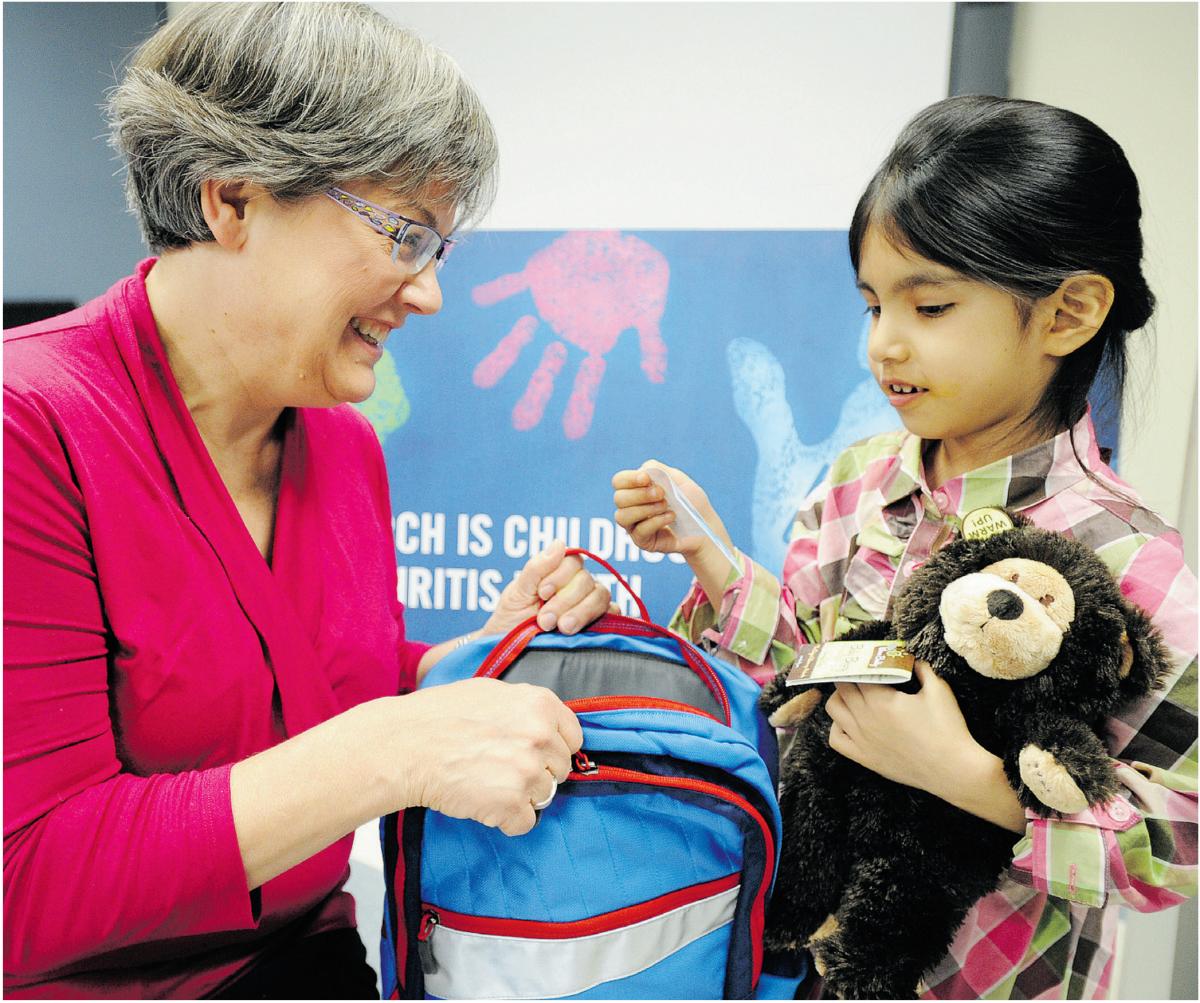The seven-year-old girl, newly diagnosed with juvenile idiopathic arthritis, proudly showed off her new backpack on the weekend and read from her storybook about a child with the same disease she has.
The teddy bear contains a gel pack for warming or cooling sore joints.
Fatima then pulled a useful tool from the backpack, a package of small rubber triangles with holes in the centre.
"This is to help me hold a pencil better," she said.
Fatima was at the launch of three programs by the Arthritis Society marking March as Childhood Arthritis Month, including the backpack program aimed at the hundreds of kids across Canada diagnosed with the disease every year.
"This is about awareness, because we need to see patients as early as possible," said Dr. Janet Ellsworth, a pediatric rheumatologist at the Stollery Children's Hospital and northern Alberta's only specialist in this field.
About 61,000 Canadian children and youths have arthritis, generally diagnosed in the early school years. There is about one case for every thousand children.
About five times as many people suffer from the better-known adult diseases of rheumatoid arthritis and osteoarthritis.
But for children, with rapidly growing bodies, arthritis can cause permanent damage to their joints if left untreated, from knees and hips to shoulders and fingers.
Arthritis may also hurt their physical development, causing them to grow more slowly if they have many affected joints.
If only one joint is affected, such as a knee, the inflammation can cause more blood to flow to the joint and make that part of the body grow faster.
Children and teens may also get inflammation in their eyes.
"I usually make a diagnosis about three months after the child has complained of soreness," said Ellsworth, who adds parents may at first think their child has simply fallen and suffered a minor injury.
But when the situation doesn't improve, they see their family doctor, who refers the patient to Ellsworth.
"After three months, I think it is usually a relief for them that they finally have a diagnosis."
The society said it can take longer for youngsters with juvenile idiopathic arthritis to be diagnosed because many people, even some doctors, do not realize that children and teens can get arthritis, which is usually associated with adults.
Treatment involves using drugs to reduce the inflammation which causes stiffness, pain and swelling. In some cases, the condition may largely disappear after a few years, but most people have to live with it.
Ellsworth said she has a variety of drugs at her disposal, but some of the latest and most effective - and most expensive - are not supported by the province's insurance system.
"Alberta has one of the most restrictive programs in the country, so this becomes an advocacy issue. It is similar to what happened with adult patients a decade ago," she said, explaining some of them had to fight to get newer drugs.
"Some of these treatments can cost $20,000 to $30,000, and so this is not something the average family can afford."
Source: edmontonjournal.com







